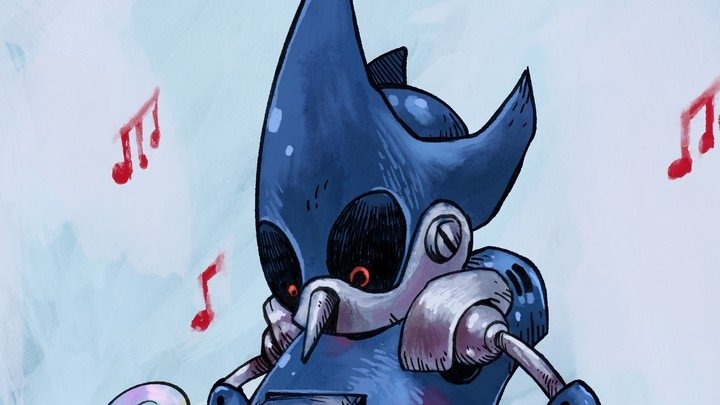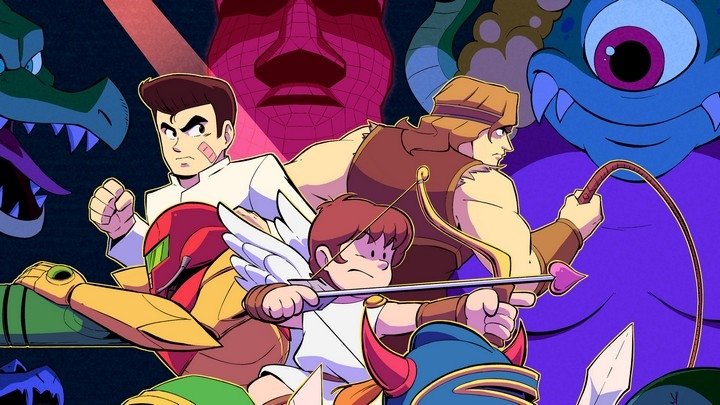Super NES Mini Countdown: #17 | Donkey Kong Country
A hero's return drove gamers bananas, and its visual style was aped far and wide.
Nintendo's Super NES Classic Edition mini-console arrives at the end of the month, and the Retronauts writing team has voted to rank the 20 classic games on the mini. Unlike last year's Classic NES Edition, the Super NES mini doesn't have a single dud on it, so think of this as a countdown from good to great. Today, one of the most important Super NES games of all time.
Previous entries:
- 20. Super Punch-Out!!
- 19. F-Zero
- 18. Kirby's Dream Course

17. Donkey Kong Country
Dev.: Rare Ltd.
Publisher: Nintendo
Genre: Platformer
Release date: Nov. 1994 [Worldwide]
What makes Donkey Kong Country a worthy inclusion?
1. New age, new ape
Donkey Kong propelled Nintendo to video game superstardom. It also gave protagonist Mario a lift. The eponymous character, however, never enjoyed the same good fortunes as his tiny rival. After Donkey Kong 3, Nintendo kind of shrugged and gave up on Kong for a decade. Donkey Kong Country redefined Kong by bringing his action more in line with Mario's (2D run-and-jump platforming) while setting him in a different world and wrapping everything in the most advanced graphics yet seen on a 16-bit system.
2. Two for the show
Kong always seemed to work best when he had another character to bounce off of, and in this case developer Rare made that second character a tag-team partner. Rather than giving Kong health points or something akin to Sonic's Rings, DKC gave him a pal: Diddy Kong. The two characters could roam together, with only one active at any give time, and players could swap between the two to take advantage of their slightly distinct play styles. And of course the Diddy/Donkey duality doubled as a health system: Take a hit and one ape would scamper away, taking the blow and forcing you to track down your captive buddy in order to reclaim that damage buffer.
3. Industrial light and magic
DKC wasn't the first game to incorporate 3D rendered graphics — Namco's Xevious had done that more than a decade earlier — but no other game before it had immersed itself wholly in them. Rare produced DKC's environmental and character graphics in three dimensions on pricey high-end computer stations, then squeezed them into traditional Super NES bitmap sprites by way of some very clever compression techniques. The overall game ran on standard Super NES tech (versus Star Fox's actual real-time 3D), but it wore a three-dimensional plasticine look that fortuitously lined up with Disney's marketing push for Toy Story, the first feature film to consist entirely of pre-rendered CG. At the time, DKC looked a whole lot more movie-like than any boxy polygonal games on 3DO, PlayStation, or Saturn — the artifice of its visuals wouldn't become obvious to the public until we started seeing more 3D cameras that could break from a static 2D plane. In 1994, though, DKC sold a heck of an illusion.

4. Jungle lifeline
In fact, it was so convincing that it kept Nintendo in the game for a while. DKC arrived in a rough patch for the company: New consoles from competitors were about to make Super NES obsolete; Game Boy had faded; Virtual Boy was about to launch and flame out spectacularly; and Project Reality (aka Ultra 64, aka Nintendo 64) kept seeing its release date slip. DKC sold incredibly well, and its fake-out graphical style created a clever way for 16-bit devs to appear technically competitive with the first wave of 32-bit software that would hit in 1995. Without DKC, Nintendo's story in the ’90s might have turned out very differently.
5. New looks
Nintendo and Rare weren't the only ones to benefit from DKC's technical chicanery. The concept of pre-rendered visuals to feign cutting-edge 3D graphics spread far and wide over the next few years, helping to "modernize" games not only on Super NES, but also Genesis, the Game Boy family, and even next-gen systems. Not every developer could afford to invest in mastering the ins and outs of polygon-based video games, but they could certainly apply Rare's technique to their years of experience with old-fashioned game design. Granted, these games have aged horribly, but it's not fair to blame DKC (whose graphics still hold up quite nicely thanks to Rare's thoughtful design artistry) for the failings of the rest of the industry…

Interesting facts about Donkey Kong Country
1. A Rare makeover
Rare went from being the second most prolific developer for NES (right after the mysterious TOSE) to nearly radio silent on Super NES. Aside from some variants on 1991's Battletoads, the company published practically nothing during 1993 and ’94. This is why: Rare's staff went all-hands on this and its pre-rendered counterpart for arcades, Killer Instinct. DKC helped precipitate a huge sea change for the studio, marking its transition from prolific developer-for-hire to premium standalone publisher.
2. Playing with super power
In Japan, DKC shipped under the name Super Donkey Kong, positioning it as Donkey Kong for the Super Famicom. Rare also gave Super Donkey Kong a special title screen, presented in one of the console's special graphical modes, which featured brighter and more varied colors than the U.S. and European title screen.
3. Identity crisis
"Super Donkey Kong" was a lie, though, because the hero of DKC is actually Donkey Kong Jr., all grown up. The original Kong, it turns out, has actually become Cranky Kong, the crotchety old ape who spends the game belittling the player. Junior sure grew up in a hurry between his appearance in 1992's Super Mario Kart and this game, two years later.
4. Return of Donkey Kong
Character specifics aside, DKC was part of a general rehabilitation for the Kong character and brand. Shortly before DKC shipped, Kong made his actual return in a lesser-known game, Donkey Kong for Game Boy. A more traditional take on the franchise, DKGB saw Kong in the villain role as Mario attempted to rescue his abducted lady friend across a series of stages. Not four stages, this time. More like… 100. Both DKGB and DKC continue to see sequels every few years (the Mario Vs. Donkey Kong and Minis puzzle platformers for the former, Retro-developed 2.5D platformers for the latter); it seems those rehab efforts took.
5. Donkey Kong EXTREME
DKC hit right in the thick of Nintendo of America's try-hard efforts to be as cool as SEGA. The marketing push for the game included promotional video cassettes sent out to Super NES owners, and the contents of that tape were... something else.
Yeah.
6: A resentful father?
Rumors of Shigeru Miyamoto's contempt for DKC have been greatly exaggerated. He was quoted in a 1994 Electronic Games interview conducted by Steven Kent as having said that DKC proves gamers would suffer through mediocre gameplay in exchange for nice graphics… pretty harsh. Even harsher when you consider he said it in a joint interview with Rare cofounder Tim Stamper, to Stamper's face! Over time, it's become apparent that the printed comment became more spiteful than intended in translation; Miyamoto has a reputation for offering blunt — not ill-spirited — appraisals of Nintendo's software in hopes of goading their designers to aim higher. (Note that Stamper, being British, would have been more culturally acclimated to that form of feedback than we delicate Americans.) Miyamoto has also admitted that DKC caused him to feel a lot of pressure from above to modernize the look of Yoshi's Island — so maybe there was a little resentment at work. Sure, he invented Kong and Mario and Zelda, but the dude's still human, like the rest of us.




